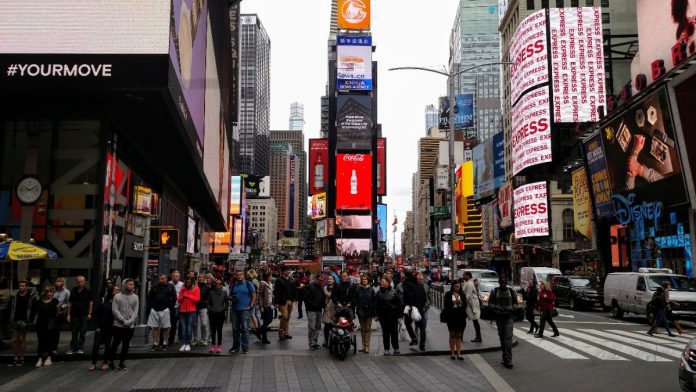If you’re a newspaper columnist or governor of New York, a pandemic is a great time to trot out medieval myths, repackage them like new, and feast on everyone’s anxiety to bring antiquated ideas into vogue once more. And that’s how you end up with “density is to blame” takes on COVID-19 running in the New York Times.
It’s also how Andrew Cuomo–governor of the state with the largest city in America–can tweet “density is destructive” and not be laughed into retirement. Perhaps if Governor Cuomo had sooner instituted a shelter-in-place order he could have used his high office to solve the problem. Instead he’s casting blame like any other Twitter troll.
The contention is nearly preposterous enough to defeat itself, but many urbanists gave it some help. Emily Badger corrected her breathless colleague with a “density is good” response that is definitely worth the read.
Many pointed out that countries that have most excelled at containing COVID-19 are among the densest. South Korea and Japan have two of the largest cities in the world with Tokyo and Seoul and yet have been remarkably effective at containing the spread, making tests widely available, and tracking down people who were exposed and likely infected to quarantine them and cut off the spread. Density didn’t prevent them from rising to the occasion.
And so Americans are left helpless reading dumb “must be the density” takes while sheltering in place at home and wishing we had the nimbleness of Japan or South Korea in responding–not to mention the density of Tokyo or Seoul that makes it likely a neighborhood has everything you need within walking distance.
Even Brian Rosenthal, who wrote the dubious density blaming article, admitted other factors were at blame but clung to correlations nonetheless: “It has spread throughout the world, including in cities and countries that are not very crowded. But researchers have noticed that New York City has a similar population and a somewhat similar density to that of Wuhan, the Chinese city where the virus originated.”
And the sky is blue in each city, too. There’s really a pattern!
On the other hand, the theory that cities with higher density will have bigger outbreaks really falls apart when doing more than facile one-on-one comparisons. Wuhan’s density is “somewhat similar” to New York City, but it’s also “somewhat similar” to Los Angeles, which Rosenthal holds up as a city resistant to COVID-19 thanks to its sprawl, since Wuhan has roughly 15,000 residents per square mile. New York sits near 28,000 people per square mile compared to 8,500 for Los Angeles. Wuhan’s density is also similar to other Chinese megacities like Shanghai and Hong Kong and yet those cities contained the spread and fared better than New York.
We can further complicate these density comparisons if we look at the metropolitan scale–which shows Greater Los Angeles denser than Greater New York.
To be fair, without a coordinated and concerted public health response, cities are certainly susceptible to a disease as contagious as COVID-19. And unfortunately that’s what we saw in the United States: denial from our leaders and no coordinated response. Now the virus has spread beyond the point where contact tracing containment measures are feasible, and we have our foot dragging to blame. And while Governor Cuomo blames density, he also waited longer than California did to issue a shelter-in-place order. On the plus side, he’s now calling for pedestrianizing streets to allow New Yorkers to get around while maintaining the recommended six-foot personal bubble. Whether much comes of that remains to be seen.
Cities aren’t going away. With seven billion people on the planet, there isn’t any way to house everyone without them. And incidentally, cities are also home to research labs and universities where we will eventually find a vaccine and treatment to put this pandemic behind us.
And how about instead of the urban angst routine we leave blame squarely on the president’s shoulders. Let’s not blame density or ourselves for not having the superpowers to recreate a competent federal response when there isn’t one.
Doug Trumm is publisher of The Urbanist. An Urbanist writer since 2015, he dreams of pedestrian streets, bus lanes, and a mass-timber building spree to end our housing crisis. He graduated from the Evans School of Public Policy and Governance at the University of Washington in 2019. He lives in Seattle's Fremont neighborhood and loves to explore the city by foot and by bike.


